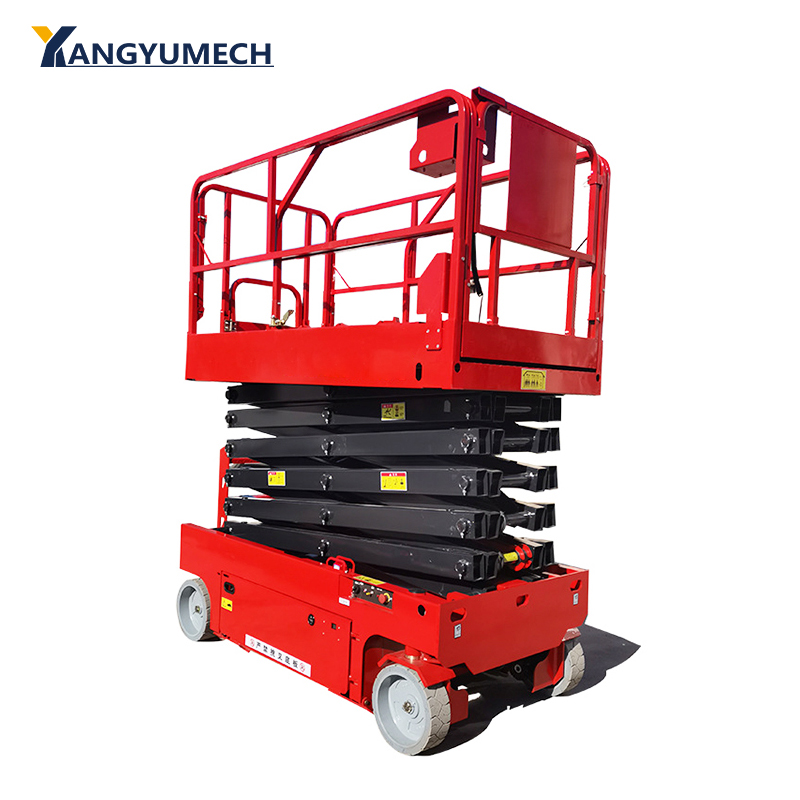hydraulic lifting platforms have become indispensable tools for efficient material and personnel elevation. These robust systems leverage fluid power technology to provide superior lifting capacity, precision control, and operational safety.

Hydraulic lifting platforms operate on Pascal’s principle of fluid mechanics, where pressurized hydraulic oil transfers force through cylinders to create controlled vertical movement. The core components include:
Hydraulic power unit: Comprising pump, motor, and reservoir that generates fluid pressure
Cylinder assembly: Transforms fluid pressure into linear mechanical motion
Scissor mechanism: Most common configuration for vertical guidance and stability
Control system: Manual, electromagnetic, or programmable logic controllers (PLCs)
Safety components: Pressure relief valves, mechanical locks, and emergency descent systems
The hydraulic lift mechanism offers significant advantages over mechanical or pneumatic alternatives, including smoother acceleration, precise positioning within ±1mm accuracy, and higher load capacities ranging from 500kg to 100,000kg. These capabilities make them ideal for industrial environments demanding reliability under extreme conditions .
Material handling efficiency has transformed across sectors through specialized hydraulic platform configurations:
Warehousing & Logistics:
Dock levelers bridging truck-trailer gaps
Mobile scissor lifts for selective racking maintenance
Customizable lift tables for assembly line integration
Manufacturing Facilities:
Height-adjustable workstations improving ergonomics
Heavy-duty steel plate lifts handling 80-ton presses
Tiltable platforms for component positioning
Construction & Maintenance:
Rough-terrain tracked lifts accessing unstable ground
Insulated platforms for high-voltage electrical work
Compact crawler lifts navigating standard doorways
Automotive & Aerospace:
Vehicle lifts enabling undercarriage access
Wing access platforms with precision positioning
Custom jig-integrated lifts for fuselage assembly
Safety statistics consistently show hydraulic platforms reduce workplace injuries by 32-45% compared to ladder-based work at height, making them a critical safety investment .
When evaluating hydraulic lifting platforms, these technical parameters determine operational suitability:
| Parameter | Standard Range | Specialized Options | Selection Guidance |
|---|---|---|---|
| Lifting Capacity | 500kg – 10,000kg | Up to 100,000kg | Calculate max load including tools/materials |
| Platform Height | 1m – 20m | Beyond 30m | Add 15-20% to current height requirements |
| Platform Size | 1m x 0.8m – 4m x 2m | Custom configurations | Ensure 360° operator movement space |
| Power Systems | 220V/380V electric | Diesel/hybrid for outdoors | Match to facility power infrastructure |
| Lift Speed | 0.1-0.3m/s | Variable-speed controls | Slower speeds for precision tasks |
| Stowed Height | 0.8m – 1.5m | Ultra-low 0.55m profiles | Verify door clearance requirements |
Structural integrity depends heavily on grade of materials; marine-grade aluminum platforms provide corrosion resistance for food/pharmaceutical applications, while heavy-gauge steel construction suits manufacturing environments. Scissor arm geometry directly impacts stability—trapezoidal designs offer 23% greater lateral rigidity than parallel-arm configurations at maximum extension .
Labor Productivity: Adjustable-height workstations reduce part retrieval time by 40%, enabling faster task completion for assembly operations
Space Utilization: Stowed heights under 1m maximize vertical storage density, addressing warehouse space optimization needs
Energy Efficiency: Regenerative descent systems capture potential energy, lowering operational electricity costs by 18-25%
Maintenance Cost Control: Sealed hydraulic systems require 50% fewer service interventions than chain-driven lifts
Safety Compliance: Integrated guardrails, tilt sensors, and pressure-holding valves meet OSHA/CE safety standards
These benefits directly respond to commercial intent keywords identified in SEO research, such as “ROI on lifting equipment” and “warehouse productivity solutions” 16.
Calculate total payload including tools, materials, and personnel
Add 25% safety margin for dynamic loading conditions
Verify structural certification (ISO 9001, CE, ANSI)
Determine working height plus average operator reach
Factor in ceiling obstructions when stowed
Select platforms with 15% height reserve capacity
Explosion-proof hydraulics for chemical environments
IP54-rated electronics for washdown areas
Corrosion-resistant finishes for marine applications
Non-slip diamond plate surfaces
Custom cutouts for machinery integration
Flip-up gates for pallet jack access
Proportional hydraulics for precision positioning
Remote diagnostics capability
Emergency descent systems with backup power
Proactive maintenance significantly extends equipment service life while preventing costly downtime:
Daily Checks: Fluid levels, hydraulic leaks, structural damage
Weekly Inspections: Cylinder rod scoring, hose abrasion, fastener tightness
Monthly Procedures: Filter changes, contamination testing, safety system verification
Annual Overhauls: Seal replacement, fluid flushing, structural load testing
Implementing IoT sensors for condition monitoring can predict 82% of hydraulic failures before operational impact through pressure deviation analysis and temperature trending .
The next generation of hydraulic lifting platforms incorporates transformative technologies:
Energy Recovery Systems: Regenerative circuits capturing descent energy to reduce grid consumption by 30%
Smart Diagnostics: IoT-enabled hydraulic sensors predicting maintenance needs through AI-based fluid analysis
Advanced Materials: Carbon fiber-reinforced cylinders enabling 40% weight reduction
Human-Machine Interfaces: VR-assisted operator training and AR-guided maintenance procedures
Green Hydraulics: Biodegradable hydraulic fluids and solar-hybrid power units
These innovations respond to growing searches for “sustainable lifting solutions” and “smart warehouse equipment” 8.
Hydraulic lifting platforms represent a critical productivity investment across industrial sectors. By matching technical specifications to operational requirements—prioritizing load capacity, lift height, and environmental factors—businesses achieve tangible efficiency gains. As automation advances, integrating smart hydraulic technologies will further transform material handling efficiency, safety, and operational cost structures.
Q1: What maintenance intervals ensure hydraulic platform reliability?
Monthly inspections (fluid quality, structural integrity) and annual system overhauls prevent 85% of hydraulic failures. IoT condition monitoring enables predictive maintenance 8.
Q2: How much do industrial hydraulic lifting platforms cost?
Prices range from $15,000 for basic 1,000kg capacity models to $150,000+ for custom 50,000kg units with advanced controls. ROI typically achieved in 18-36 months through productivity gains 6.
Q3: What safety certifications apply to hydraulic lifts?
Core certifications include ANSI/ITSDF B92.9, EN 1570 safety standards, and CE/OSHA compliance. Industry-specific certifications exist for food (FDA), explosion-proof (ATEX), and marine (DNV/GL) applications 8.
Q4: How do hydraulic platforms compare to pneumatic alternatives?
Hydraulic systems provide 3-5x higher load capacity, superior positioning precision, and smoother movement but require more maintenance than pneumatic systems in clean environments